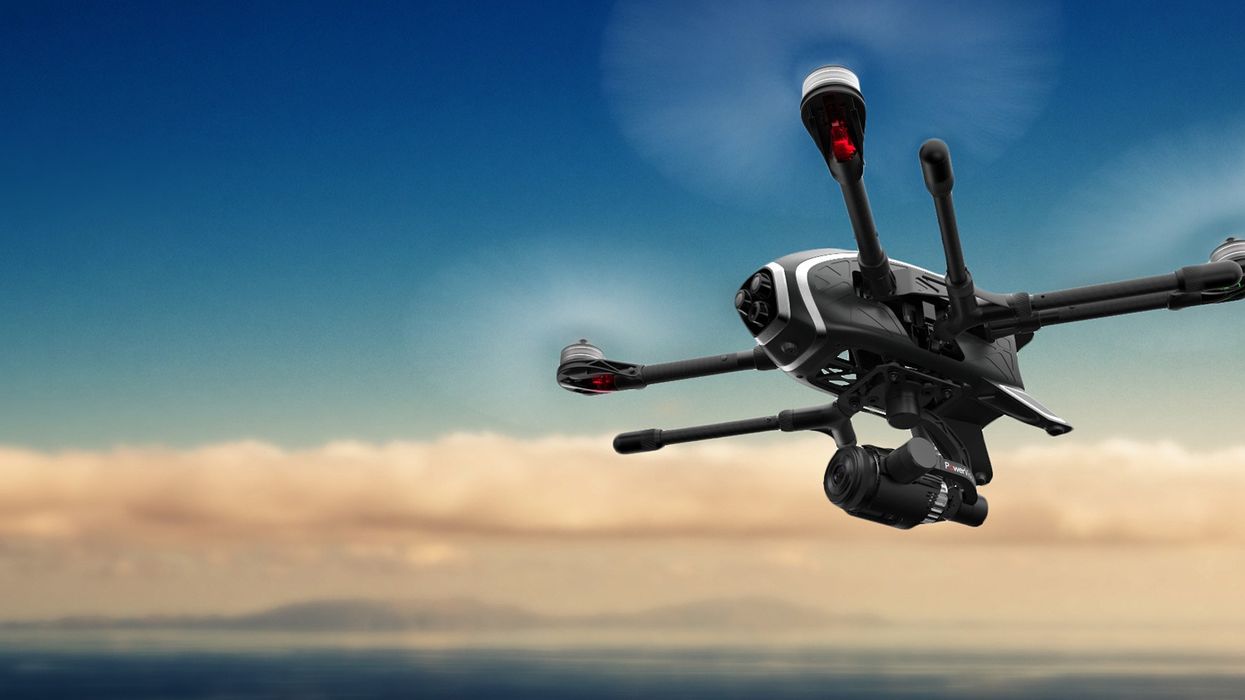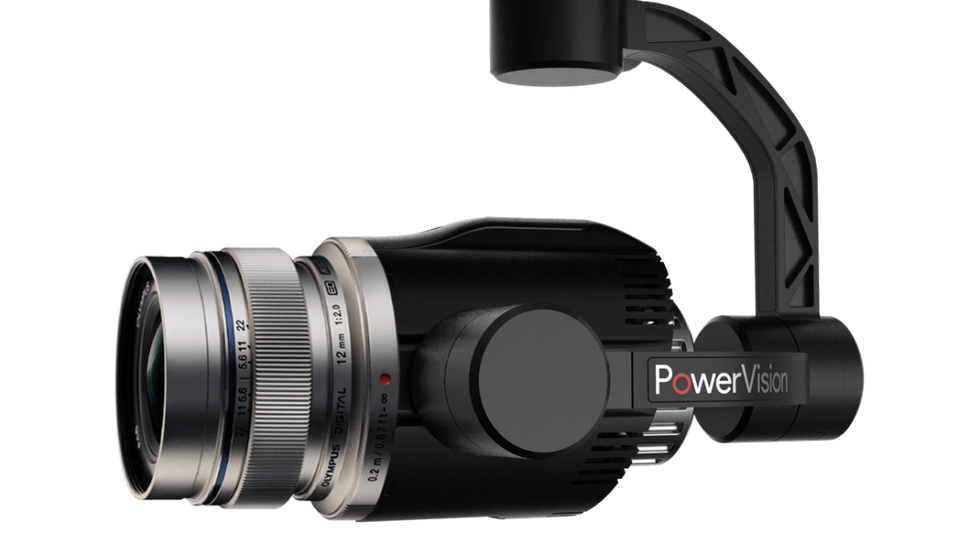PowerEye Gives You Thermal Vision In The Sky
PowerVision releases the new PowerEye collapsable professional drone, with an MFT interchangeable lens mount and the option of heat sensitive Thermal Vision.

With all the attention generated by the GoPro Karma and the DJI Mavic, collapsible portable drones are a hot consumer product this fall, but there is still a big universe of prosumer and professional needs for drones capable of more sophisticated camera moves, with better lenses and sensors, longer flight times and faster air speeds. The PowerEye from PowerVision has several features that could make upgrading to this more sophisticated drone worth considering, and it still folds up into a compact case for easy transport like the Karma and the Mavic.

One of the key features is a well-designed, interchangeable lens system, which has an integrated adjustable weight built into the back of the camera for adjusting the counterbalance to ensure proper stabilization for different lens weights and sizes. The lens mount is MFT, and the default lens that the PowerEye Professional kit comes with is a Panasonic Lumix G 14mm F2.5 ASPH prime. There is an optional 14-42mm MFT zoom that has functional zoom control, and most small MFT lenses should work, though the counterbalance isn't dynamic and you'll want to work with zooms that don't dramatically change their balance point through their zoom range.

The drone also features a dedicated First Person View (FPV) system, which includes a camera mounted on the body of the drone for detecting elements in close proximity to the drone body, especially helpful when the Subject Matter View (SMV) camera is pointed away from the direction of travel. With Dual Viewing enabled on the remote, the operator can simultaneously view the image captured with the main drone camera, and a camera view from the front of the drone that can help tremendously with navigating around nearby objects. This function also works with dual operator mode, with the flying operator seeing the FPV and the camera operator seeing the SMV. The drone also has object detection technology to help with indoor flying, using an array of integrated sensors to detect flight path obstacles and sound an alert within 10 meters.
In addition to the standard camera body, you can upgrade the camera module to thermal vision. This official upgrade offered from PowerVision is switchable between normal imagery and thermal imagery, which displays different temperature elements as different colors. The feature is familiar to many filmmakers as Predator Vision from the seminal 1980s action film Predator. While this has obvious industrial applications (inspecting powerlines for overheating transformers or buildings for HVAC leaks), there are filmmaking applications as well, for instance helping nature documentarians find animal subjects in dense situations. Or, of course, Predator Vision. While they haven't released images yet from their thermal sensor, they have released images of what the camera body itself looks like. With a dual lens setup on the camera body and an integrated main lens, it looks like you have to give up interchangeable lenses in order to add heat vision.

Available now for pre-order for $3998, including a PowerEye aircraft with a full set of propellers, 14mm camera lens, rolling carrying case, one remote control, an extra pair of propellers, base station, battery, and battery charger.
Tech Specs:
- PowerVision Object Detection Technology
- 340 x 285 x 296 mm folded size for transport
- 513 mm x 513 mm x 310 mm flight size
- 40mph maximum flight speed
- Micro Four Thirds (MFT) lens mount
- 4/3″ CMOS sensor
- Panasonic Lumix G 14mm F2.5 ASPH default kit lens
- 30-minute maximum flight time
- 3.1 miles (5 kilometers) control range with full HD video
- 8.7 lb (3,950 g) with battery and propellers
- 6.6lbs maximum payload
- ISO 100 – 3,200
- 4K: 4,096 x 2,160 @24p; UHD: 3,840 x 2,160 @24 fps / 25 fps / 30fps,
- 60mb/s max datarate











